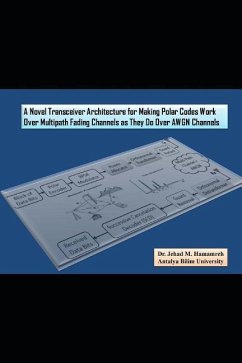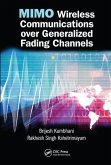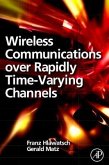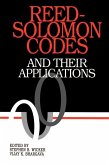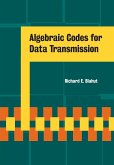Polar codes, recently accepted for adoption in 5G standard due to their excellent performance at a very low complexity compared to other competitive schemes in the literature, are deemed to be a strong candidate for the Internet of Things (IoT) applications as well due to meeting their requirements. However, since polar codes construction is naturally channel-dependent, there has recently been an increasing interest in addressing the challenge of making polar codes work in realistic fading environments as they do in a binary symmetric channel (BSC). Recent studies on polar codes for fading channels have mainly focused on constructing new specific polar codes suitable to particular fading channels. This results in a non-universal code structure, leading to continuous changes in the code structure based on the channel, which is not desirable in practice. To address this problem, we develop and propose a novel transceiver architecture which enables using the polar coding design of a binary input additive white Gaussian noise (BI-AWGN) channel for multi-path fading channels without causing any changes in the structure of the encoder and decoder sides. This is made possible by eliminating the channel fading effect so that a net AWGN channel can be seen at the input of a simple successive cancellation decoder (SCD). The novelty of the proposed solution lies in using a channel-based orthonormal transformation with optimal power allocation at the transmitter and another transformation at the receiver to make the net, effective channel seen by the SCD very similar to an AWGN channel. The obtained results show that the proposed design makes the bit error rate (BER) performance of polar codes over a frequency selective fading channel the same as that over an AWGN channel. As an additional great advantage, the proposed design is found to be capable of providing confidentiality against eavesdropping receivers (i.e., unintended users) at the physical layer. Particularly, wireless physical layer security is delivered by the proposed scheme because of the fact that the transmitted data blocks are designed based on the channel of the legitimate receiver, which is naturally different from that of an eavesdropper, who is normally located several wavelengths away from the legitimate receiver and thus experiencing a different channel.==========================================================This short-length e-book is meant for students (master and Ph.D.), researchers, engineers, practitioners, and instructors who are interested in wireless communication and signal processing. You should have a fair understanding of digital communication systems, linear algebra, random variables, and channel coding to begin with.
Hinweis: Dieser Artikel kann nur an eine deutsche Lieferadresse ausgeliefert werden.
Hinweis: Dieser Artikel kann nur an eine deutsche Lieferadresse ausgeliefert werden.

